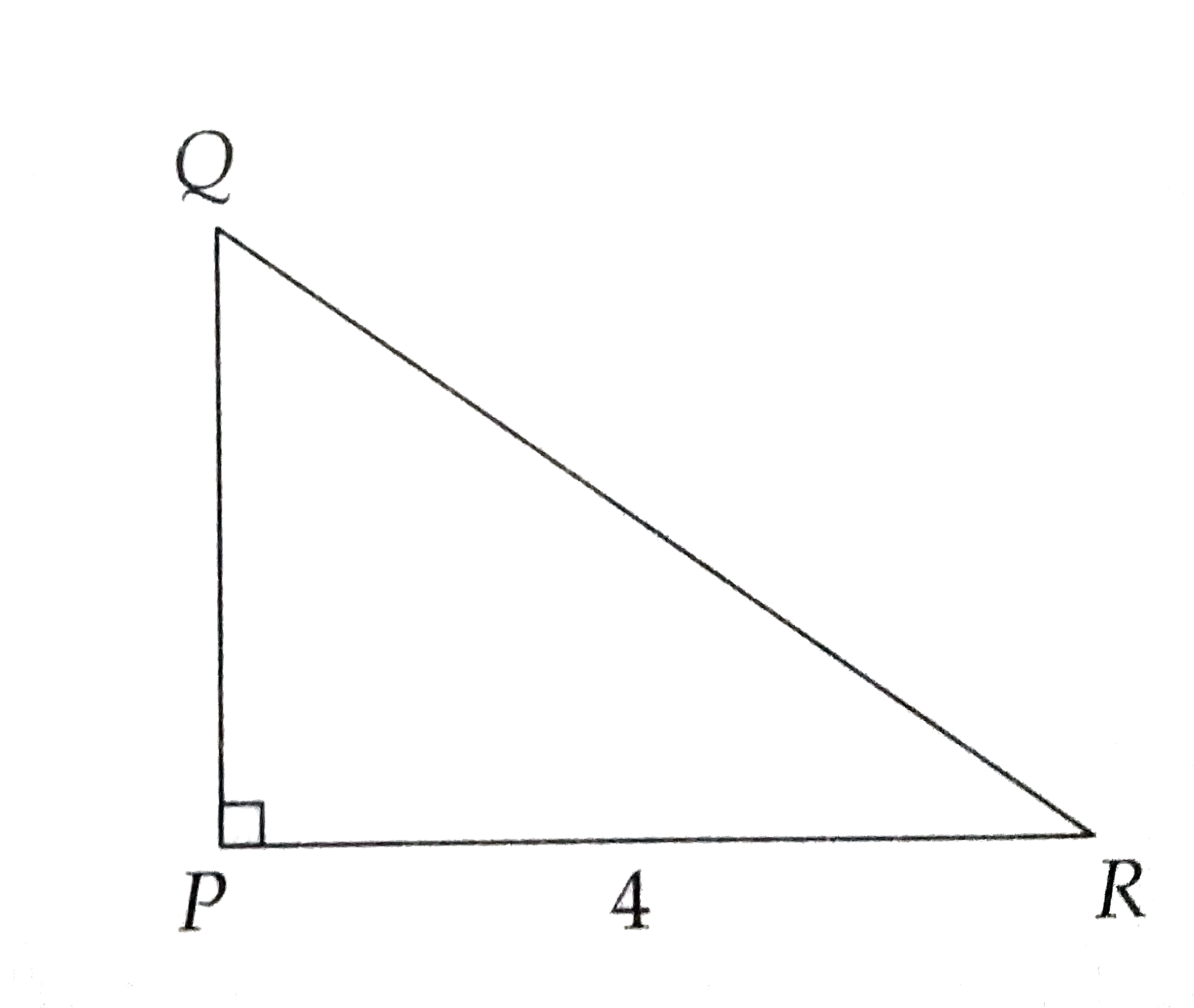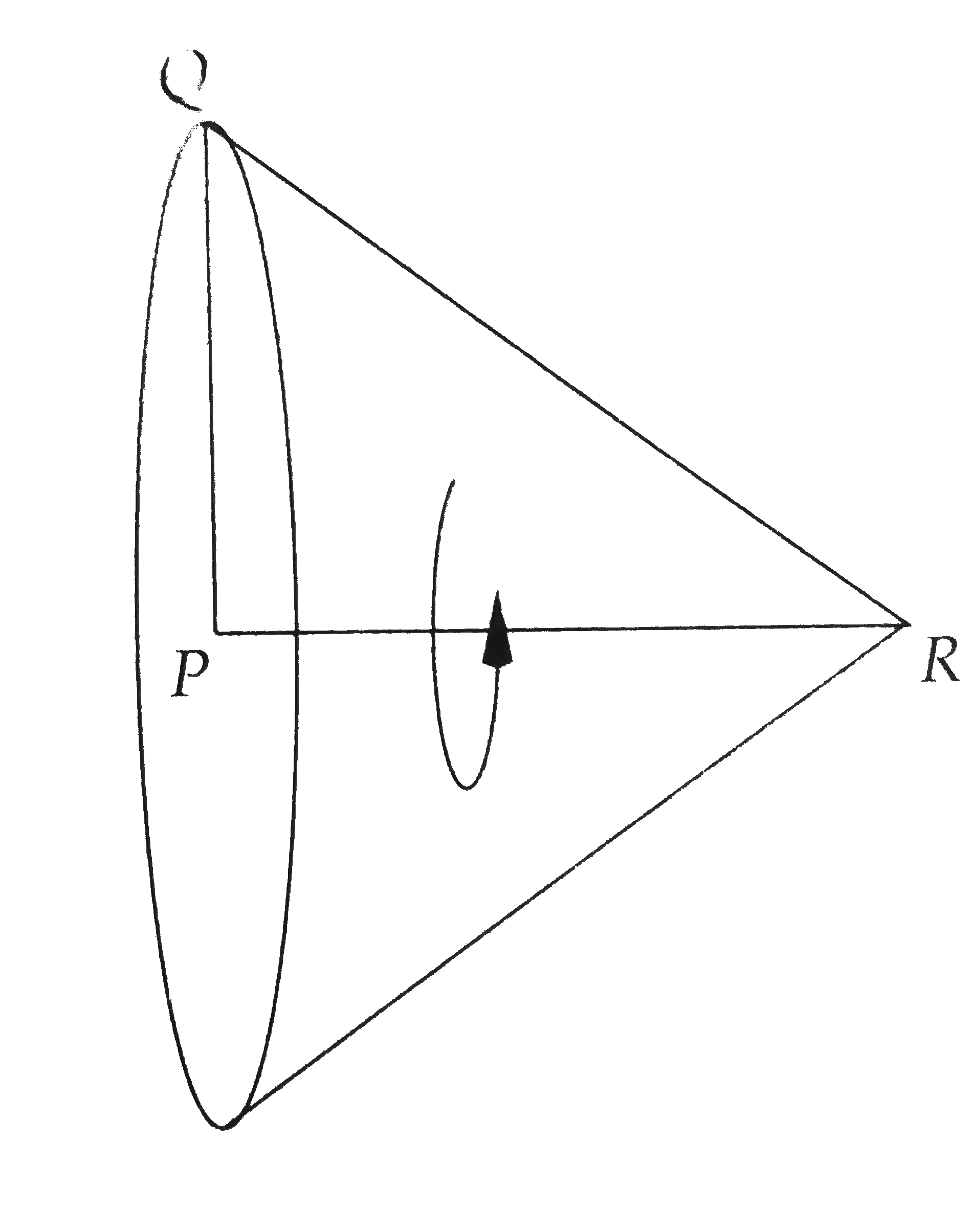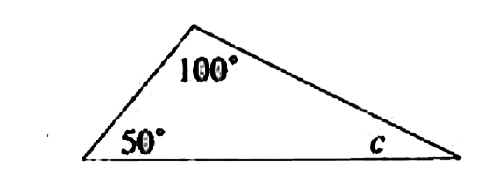The measure of angle angle QPR is 90 degrees, and the area of triangle PQR is 6. If triangle PQR is rotated about side PR, what is the total surface area of the resulting solid ?

The correct Answer is:C
Think about what shape the top and bottom will create when each is rotated about its midpoint.
Can you visualize what the resulting solid looks like ? It can be a little difficult to sketch 3-D geometry. You're probably better off if you can just ''see'' it in your head. It'll look something like this :

The resulting solid will be a right circular cone. The total surface area of a right circular cone is the sum of the area of the circular base plus the lateral area. If we call the radius of the circular base r, then the area of the circular base is . If we cell the circumference of the circular base c and the slant height l, then the lateral area is ,
When right triangle PQR is rotated about PR, the resulting right circular cone will have a circular base with a radius that is leg PQ of right triangle PQR and a slant height that is hypotenuse QR of this triangle. So in order to find the total surface area of the right circular cone, we need to find the length of leg PQ and the length of hypotenuse QR of right triangle PQR.
Let's first the length of PQ. The area of any triangle is base height. The area of a right triangle is , because one leg can be considered to be the base and the other leg can be considered to be the height.
The area of right traingle PQR is . We know that PR = 4 and that area of right triangle PQR is 6. So . Let's solve this equation for PQ. We have , so PQ = 3. The radius of the base of the right circular cone is 3. The area of the circular base is .
Now let's find the hypotenuse QR of right triangle PQR. This triangle has legs of length 3 and 4, so this is a 3-4-5 right triangle. So the length of QR is 5. Thus, the slant height l of the right circular cone is 5. The circumference c of the circular base is . Thus, and . The lateral area is . The area of the circular base is and the lateral area is . The total surface area is . Now . To the nearest hundredth, . Choice (C ) is correct.
A typical SAT subject Test : Mathematics Level 2 will include one or two questions that entail visulazing.
Topper's Solved these Questions
- SOLID GEOMETRY Book:KAPLANChapter:SOLID GEOMETRY Exercise:SOLID GEOMETRY FOLLOW - UP TEST
Explore 5 Videos
- SIMILARITY, CONGRUENCE, AND PROOFSBook:KAPLANChapter:SIMILARITY, CONGRUENCE, AND PROOFSExercise:Multiple Choice Question
Explore 10 Videos
- SYSTEM OF LINEAR EQUATION Book:KAPLANChapter:SYSTEM OF LINEAR EQUATION Exercise:Multiple Choice Question
Explore 20 Videos
Similar Questions
Knowledge Check
In this triangle, what is the degree measure of angle c ?
 A17B20C30D40
A17B20C30D40
The sides containing right angles of a right angled triangle are 8 cm and 6 cm. It is rotated about its hypotenus. Find the volume and total surface area of the formed solid.
View SolutionTriangle PQR has right angle Q. If sin R=45, what is the value of tan P ?
View SolutionThe sides containing right angles of a right angled triangle are 8 cm and 6 cm it is rotated about its hypotenuse . Find the volume and total surface area of the solid formed.
View SolutionIn a triangle PQR, QR = PR and ∠P=36∘. Which is the largest side of the triangle ?
View SolutionIn ΔPQR, If ∠R>∠Q, then
View SolutionLet Δ denote the area of the Δ A B C then what is the area of triangle PQR whose sides are half of it.
View Solution
In the figure above, triangle PQR is a similar to triangle XYZ (not shown) . IF PQ:XY=QR:YZ=PR:XZ=4:5, what is the measure , in degrees, of angle Y?
View Solution

